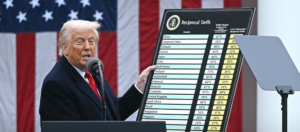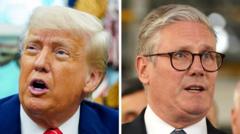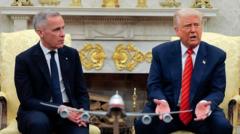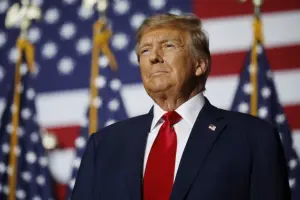The Trump administration's new tariff strategy has begun, instituting a 10% blanket tariff on imports and sharply increasing duties on countries with high trade barriers, particularly China, as market volatility rises in response.
Trump's New Tariff Strategy Officially Launches "Liberation Day"

Trump's New Tariff Strategy Officially Launches "Liberation Day"
President Trump's universal tariff implementation marks a significant shift in U.S. trade policy, targeting key trading partners and raising fears of economic retaliation.
President Donald Trump officially launched his controversial tariff strategy on April 9, 2025, an initiative labeled “Liberation Day” by the administration, reshaping the U.S. trade landscape. The new policy introduces a universal 10% tariff on all imported goods, complemented by additional "reciprocal" tariffs directed at nations with restrictive trade practices against U.S. exports.
The harshest measures target China, imposing a staggering total tariff rate of 54% on Chinese imports. This figure is a result of a new 34% reciprocal duty added to the existing 20% tariff already placed on Chinese goods. Treasury Secretary Scott Bessent clarified that the reason for these drastic increases is a direct response to China's continuing intellectual property theft and trade barrier maneuvers.
In addition to China, other nations are facing steep tariff increases. The European Union will see a 20% tariff, while Japan faces a 24% hike. South Korea's goods will have a 25% tariff, and Vietnam’s imports will incur a hefty 46% charge. Taiwan will see a 32% tariff effective from April 9, following the initial blanket tariff that began on April 5.
President Trump has affirmed that this sweeping trade shift is essential for the protection of American industries and aimed at correcting perceived years of unfair trade practices. “We’re not starting a trade war,” Trump asserted. “We’re ending the one they’ve been waging against us for years.”
However, critics voice concerns that these tariffs could lead to soaring prices for American consumers, alongside potential retaliatory measures from affected nations. Almost immediately, China announced counteractions, including higher tariffs on American products and restrictions on the export of rare earth minerals crucial to U.S. manufacturing and defense efforts.
In the wake of these announcements, financial markets have experienced instability as investors contemplate the repercussions of a possible extended trade conflict. Analysts warn that these moves could fundamentally alter the global economic climate, particularly if other countries choose to follow Trump’s aggressive trade stance.
Despite the backlash, the Trump administration argues that this tariff strategy is merely the first step in a comprehensive campaign to revive American manufacturing, penalize unfair trading partners, and reassert U.S. economic influence globally.




















